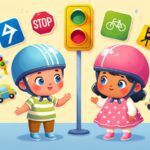Discussing family diversity with young children is an essential conversation in today’s society, where families come in all shapes and sizes. By introducing these concepts early on, we pave the way for a more inclusive and understanding future generation. This guide aims to provide parents and educators with tips and strategies for engaging in these important discussions.
Understanding Family Diversity
Family diversity encompasses the various family structures and compositions that exist in society. From single-parent families to those with same-sex parents, adoptive families, and more, it’s important for children to understand that love and care define a family, not just traditional norms. Discussing family diversity with young children helps them see the beauty in every family’s uniqueness.
Research suggests that early exposure to diverse family models can promote empathy and reduce prejudice in young children (American Psychological Association). Therefore, it’s crucial to introduce these concepts through age-appropriate language and materials.
Discussing Family Diversity with Young Children
Begin by explaining to children that families are like puzzles; they come in different shapes and sizes but are beautiful and complete in their own way. Use simple, straightforward language and be prepared to answer their questions with honesty and sensitivity. Reading books with diverse family representations can also be a powerful tool in sparking these discussions.
Encourage questions and be open about the fact that some children have one parent, some have two (of either gender), and others may be raised by grandparents or guardians. This openness fosters a safe space for children to express their curiosity and understand the diversity around them. For resources and support, visiting websites like Baby Whys and Hows can offer valuable insights.
Creating an Inclusive Environment
Creating an inclusive environment is key in reinforcing the concepts of family diversity. This involves showcasing diverse family structures through classroom materials, books, and discussions. Celebrating different cultural and family traditions in the classroom or at home can also help children appreciate diversity from a young age.
Moreover, engaging in activities that involve diverse family structures can be a practical way of teaching children about inclusivity. For example, artwork or storytelling sessions where children depict their family or a family they know can be enlightening. It’s also beneficial to connect with resources and communities that emphasize the importance of diversity, such as fostering a multicultural environment for your child.
In conclusion, discussing family diversity with young children is not just about teaching them about different family structures but also about instilling values of empathy, respect, and inclusivity from a young age. By openly engaging in conversations, providing diverse representations, and creating inclusive environments, we can help shape a generation that values and respects diversity in all its forms. For more insights on nurturing understanding and empathy in children, explore resources on Baby Whys and Hows.













